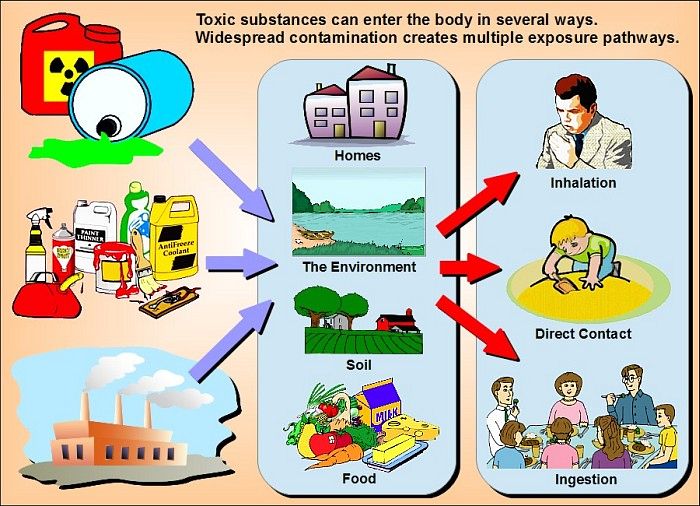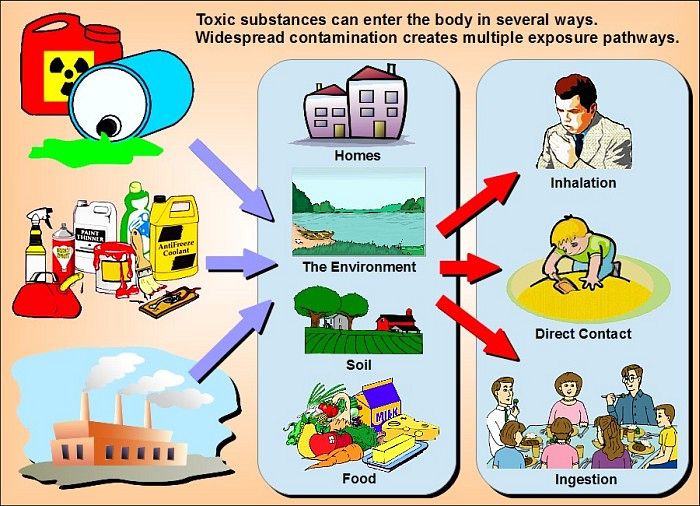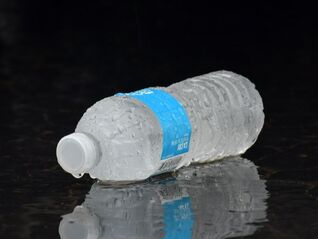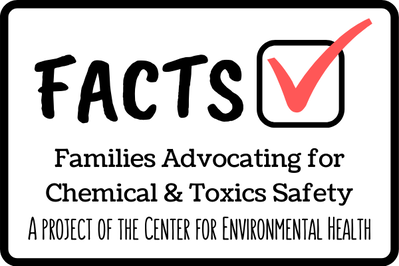Common Exposures
|
UNDERSTANDING EXPOSURE
We all come into contact with chemicals every day. Some chemical exposure is safe and some is not safe. People respond to chemical exposure in different ways; some may have extreme sensitivities and a greater body-burden while others are seemingly unaffected. We are all affected by toxics exposure. Oftentimes, health outcomes due to toxics exposure have a latent expression, which means health problems may not show up right away and are expressed later in life. Harmful chemicals or toxics can get into your body through what you eat, drink, and/or come into direct contact with. It is best to be informed and understand how we are exposed, what we can do to reduce exposure, and best practices for eliminating toxics in our daily lives. |
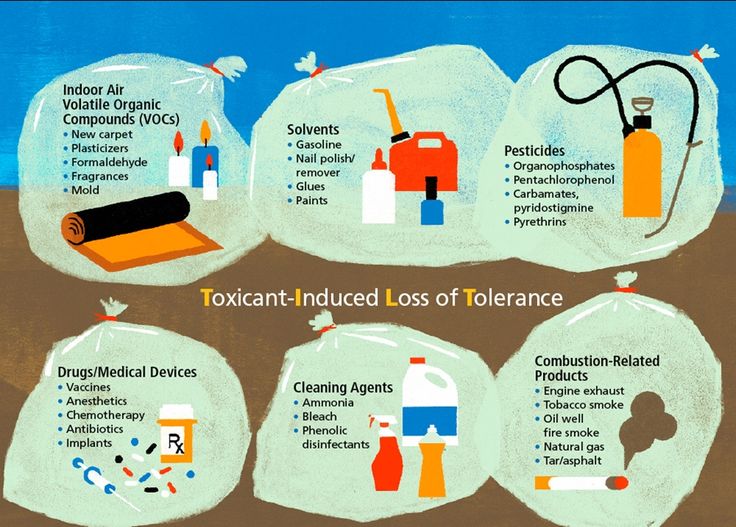
ROUTES OF EXPOSURE
There are many factors to consider regarding toxics exposure and health outcomes, including:
Type of chemical or toxic exposure
There are many factors to consider regarding toxics exposure and health outcomes, including:
Type of chemical or toxic exposure
- Route of exposure
- Length, type, frequency of exposure
- How were you exposed?
- How much?
- For how long?
- General health and nutrition
- gender
- reproductive status
- age
- lifestyle factors
- genetic disposition
- previous sensitization
- previous exposures to other chemicals or toxics
Common Household Toxics Exposures
|
ABSESTOS
What It Is: A naturally occurring fibrous silicate mineral Found In: Housing insulation, drywall, artificial fireplace logs, toys Health Hazard: Mesothelioma, a fatal cancer What You Should Know: Asbestos in products is not always labeled, and while most manufacturers have abandoned it or reduced its levels, it's still not banned by the U.S. government |
|
BISPHENOL A (BPA)
What It Is: A chemical used in plastic production Found In: Water bottles, baby bottles, plastic wraps, food packaging (type 3 and 7 plastics) Health Hazards: Known endocrine disruptor. The government's National Toxicology Program has concluded that there is some concern about brain and behavioral effects on fetuses and young children at current exposure levels What You Should Know: Switch to glass products when possible |

DECABROMODIPHENYL ETHER (DECA)
What It Is: A flame retardant
Found In: Electronics, furniture, carpets
Health Hazards: Permanent learning and memory deficits; hearing defects; decreased sperm count in animals
What You Should Know: Following EPA advice, the industry began phasing out the chemical in December 2009
What It Is: A flame retardant
Found In: Electronics, furniture, carpets
Health Hazards: Permanent learning and memory deficits; hearing defects; decreased sperm count in animals
What You Should Know: Following EPA advice, the industry began phasing out the chemical in December 2009

ELECTROMAGNETIC FIELDS (WIRELESS RADIATION)
What It Is: Wireless devices and networks use microwave radio frequency radiation to transmit data. This man made non-ionizing radiation is different from the natural background levels on earth because they are pulsed information carrying waves.
Found In: Cell phones, computers, Wi-Fi, virtual assistants, Bluetooth, video game consoles, and wireless electronics.
Health Hazard: Cancer, Memory deficits, decreased sperm counts, hormone changes, hyperactivity, headaches, impaired neurodevelopment and increased oxidative stress.
What You Should Know: Wireless radiation is absorbed into our bodies, especially the area of our body closest to the wireless antenna. Children absorb proportionately more radiation deeper into their brain when compared to adults because they have thinner skulls and smaller heads.
What It Is: Wireless devices and networks use microwave radio frequency radiation to transmit data. This man made non-ionizing radiation is different from the natural background levels on earth because they are pulsed information carrying waves.
Found In: Cell phones, computers, Wi-Fi, virtual assistants, Bluetooth, video game consoles, and wireless electronics.
Health Hazard: Cancer, Memory deficits, decreased sperm counts, hormone changes, hyperactivity, headaches, impaired neurodevelopment and increased oxidative stress.
What You Should Know: Wireless radiation is absorbed into our bodies, especially the area of our body closest to the wireless antenna. Children absorb proportionately more radiation deeper into their brain when compared to adults because they have thinner skulls and smaller heads.

EXTREMELY LOW FREQUENCY ELECTRIC AND MAGNETIC FIELDS
What It Is: These fields exist whenever electricity flows. They decrease rapidly the further away you are from the source.
Found In: Electronics (electric blankets, alarm clocks, televisions, computers, utility meters) appliances, charging cell phones and digital devices, extension cords, electric wiring, powerlines.
Health Hazard: Replicated research links exposure to childhood leukemia, tumor promotion, and miscarrriage. Researchers have also found asthma, hormone changes and oxidative stress.
What You Should Know: Simple changes at home like using a battery powered alarm clock, charging cell phones away from your sleeping area can significantly decrease your exposure. The US has no regulatory limits set for this type of radiation yet many European countries have strict limits.
What It Is: These fields exist whenever electricity flows. They decrease rapidly the further away you are from the source.
Found In: Electronics (electric blankets, alarm clocks, televisions, computers, utility meters) appliances, charging cell phones and digital devices, extension cords, electric wiring, powerlines.
Health Hazard: Replicated research links exposure to childhood leukemia, tumor promotion, and miscarrriage. Researchers have also found asthma, hormone changes and oxidative stress.
What You Should Know: Simple changes at home like using a battery powered alarm clock, charging cell phones away from your sleeping area can significantly decrease your exposure. The US has no regulatory limits set for this type of radiation yet many European countries have strict limits.
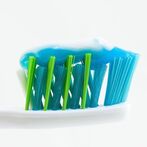
FLOURIDE
What It Is: A form of the basic element fluorine
Found In: Toothpaste, tap water
Health Hazards: Neurotoxic and potentially tumorigenic if swallowed; the American Dental Association advises that children under 2 not use fluoride toothpaste
What You Should Know: Government studies support current fluoride levels in tap water, but studies on long-term exposure and cancers are ongoing
What It Is: A form of the basic element fluorine
Found In: Toothpaste, tap water
Health Hazards: Neurotoxic and potentially tumorigenic if swallowed; the American Dental Association advises that children under 2 not use fluoride toothpaste
What You Should Know: Government studies support current fluoride levels in tap water, but studies on long-term exposure and cancers are ongoing

HEAVY METALS
What It Is: Heavy metals are naturally occurring elements that have a high atomic weight and a density at least 5 times greater than that of water. Mercury, arsenic, lead, aluminum, nickel, thallium, cadmium.
Found In: Multiple industrial, domestic, agricultural, medical and technological applications. Mercury is most often ingested by eating fish. Old homes still have lead-based paint. Mining and smelting operations run-off into water sources.
Health Hazard: Toxicity depends on several factors including dose, route of exposure, and chemical as well as the age, gender, genetics, and nutritional status of exposed individuals. Arsenic, cadmium, chromium, lead, mercury are considered stem toxicants are are known to induce multiple organ damage, even at lower exposure levels. They are classified as human carcinogens (known or probable) according to US EPA and International Agency for Research on Cancer.
What It Is: Heavy metals are naturally occurring elements that have a high atomic weight and a density at least 5 times greater than that of water. Mercury, arsenic, lead, aluminum, nickel, thallium, cadmium.
Found In: Multiple industrial, domestic, agricultural, medical and technological applications. Mercury is most often ingested by eating fish. Old homes still have lead-based paint. Mining and smelting operations run-off into water sources.
Health Hazard: Toxicity depends on several factors including dose, route of exposure, and chemical as well as the age, gender, genetics, and nutritional status of exposed individuals. Arsenic, cadmium, chromium, lead, mercury are considered stem toxicants are are known to induce multiple organ damage, even at lower exposure levels. They are classified as human carcinogens (known or probable) according to US EPA and International Agency for Research on Cancer.

MOLDS
What It Is: Fungi that are found in humid areas.
Found In: Common to residential houses
Health Hazard: Most mold spores are benign, however large amounts can lead to respiratory concerns and reactions, especially for those with weakened immune systems or immunodeficiency syndromes.
What You Should Know: Keeping levels of moisture and temperatures regulated in a home should minimize mold growth. Clean the HVAC ducts, attic, and crawlspaces in your home to remove mold. Add air ventilation in attics and crawlspaces to ensure adequate airflow and minimize mold-growing environments.
What It Is: Fungi that are found in humid areas.
Found In: Common to residential houses
Health Hazard: Most mold spores are benign, however large amounts can lead to respiratory concerns and reactions, especially for those with weakened immune systems or immunodeficiency syndromes.
What You Should Know: Keeping levels of moisture and temperatures regulated in a home should minimize mold growth. Clean the HVAC ducts, attic, and crawlspaces in your home to remove mold. Add air ventilation in attics and crawlspaces to ensure adequate airflow and minimize mold-growing environments.

OXYBENZONE
What It Is: A chemical used in cosmetics
Found In: Sunscreens, lip balm, moisturizers
Health Hazards: Linked to hormone disruption and low-birthweight babies
What You Should Know: About 97% of Americans have the compound in their urine, but current exposure levels have been deemed safe
What It Is: A chemical used in cosmetics
Found In: Sunscreens, lip balm, moisturizers
Health Hazards: Linked to hormone disruption and low-birthweight babies
What You Should Know: About 97% of Americans have the compound in their urine, but current exposure levels have been deemed safe

PARABENS
What They Are: Synthetic preservatives
Found in: Products like moisturizers and hair care and shaving products
Health Hazards: Causes hormone disruptions and cancer in animals
What You Should Know: The FDA has deemed current levels in cosmetics safe, but paraben-free products are available
What They Are: Synthetic preservatives
Found in: Products like moisturizers and hair care and shaving products
Health Hazards: Causes hormone disruptions and cancer in animals
What You Should Know: The FDA has deemed current levels in cosmetics safe, but paraben-free products are available

PERCHLORATE
What It Is: An oxidant in rocket fuel (salt compound obtained from perchloric acid)
Found In: Drinking water, soil, some vegetables Health hazard Disrupts thyroid's hormone production
Health Hazard: Chief hazard is its ability to block iodine uptake, which is linked to thyroid and hormone ailments. They are especially harmful to unborn fetuses.
What You Should Know: Environmental groups are urging the government to lower perchlorate levels in drinking water
What It Is: An oxidant in rocket fuel (salt compound obtained from perchloric acid)
Found In: Drinking water, soil, some vegetables Health hazard Disrupts thyroid's hormone production
Health Hazard: Chief hazard is its ability to block iodine uptake, which is linked to thyroid and hormone ailments. They are especially harmful to unborn fetuses.
What You Should Know: Environmental groups are urging the government to lower perchlorate levels in drinking water

PERFLOUROOCTANOIC ACID (PFOA)
What It Is: A component of Teflon nonstick coatings
Found In: Tap water, nonstick pots and pans
Health Hazards: Has been found to cause hormone disruption and reproductive abnormalities in animal and human studies
What You Should Know: The EPA is urging makers to stop using PFOA by 2015. Until then, avoid heating empty Teflon cookware to high temperatures
What It Is: A component of Teflon nonstick coatings
Found In: Tap water, nonstick pots and pans
Health Hazards: Has been found to cause hormone disruption and reproductive abnormalities in animal and human studies
What You Should Know: The EPA is urging makers to stop using PFOA by 2015. Until then, avoid heating empty Teflon cookware to high temperatures

PHTHALATES
What They Are: Chemicals (esters) that give plastic its resilience and flexibility
Found In: Toys, raincoats, shower curtains, vinyl flooring, detergents, food packaging, shampoos
Health Hazards: Studies show reduced sperm counts and reproductive abnormalities in newborns (especially males with undescended testes); evidence of a link to liver and breast cancers in humans and is a known endocrine disruption.
What You Should Know: Limit exposure, especially when pregnant. Avoid using products that use the word “fragrance” in the ingredients. Limit use of type 3 PVC plastics. Congress passed legislation in 2008 to ban six phthalates from toys and cosmetics.
What They Are: Chemicals (esters) that give plastic its resilience and flexibility
Found In: Toys, raincoats, shower curtains, vinyl flooring, detergents, food packaging, shampoos
Health Hazards: Studies show reduced sperm counts and reproductive abnormalities in newborns (especially males with undescended testes); evidence of a link to liver and breast cancers in humans and is a known endocrine disruption.
What You Should Know: Limit exposure, especially when pregnant. Avoid using products that use the word “fragrance” in the ingredients. Limit use of type 3 PVC plastics. Congress passed legislation in 2008 to ban six phthalates from toys and cosmetics.

VOLATILE ORGANIC COMPOUNDS (VOCS)
What It Is: Volatile Organic Compounds are varied, numerous, and ubiquitous. They include both human-made and naturally occurring chemical compounds. Most scents or odors are of VOCs
Found In: cleaning fluids, carpets, paints, acetone, formaldehyde, turpentine
Health Hazard: Sick Building Syndrome
What You Should Know: VOCs have a high vaporizing pressure and a low boiling point which causes them to easily evaporate in room temperature conditions. This is also known as off-gassing.
What It Is: Volatile Organic Compounds are varied, numerous, and ubiquitous. They include both human-made and naturally occurring chemical compounds. Most scents or odors are of VOCs
Found In: cleaning fluids, carpets, paints, acetone, formaldehyde, turpentine
Health Hazard: Sick Building Syndrome
What You Should Know: VOCs have a high vaporizing pressure and a low boiling point which causes them to easily evaporate in room temperature conditions. This is also known as off-gassing.
Toxic Exposures of Major Concern
Heavy Metals (cadmium, lead, mercury, arsenic)
- high acute toxicity includes death
- alterations of epigenetic signatures in the DNA (DNA methylation) of the placenta and newborns
- reduced IQ
- increased risk of emotional problems in 7-8 year-old boys
- alterations in genomic methylation
- impaired neurodevelopment
- decrease in cognitive function and performance
- decreased intelligence quotient
- increased incidence of attention-related and antisocial behaviors
- decreased hearing measured in children
- reduced intellectual development
- reduced psychomotor outcomes
- neurobehavioral deficits
- difficulty breathing and swallowing
- anemia
- increased risk of skin, liver, bladder, and lung cancer
- immune dysfunction
- neurological deficits
- reproductive anomalies
- behavioral abnormalities
- carcinogenesis
- reduction in population of natural killer cells (lymphocytes)
- rates of infections 10-15 times higher
- inner ear infections
- trans-placental and lactational transfer of maternal burdens
- female reproductive toxicity (recurrent miscarriage, infertility)
- aggression and hyperactivity in female children
- impaired behavioral regulation (anxious, depressive, and hyperactive behaviors) in girls ages 3 years
- reduced neonatal thyroid-stimulating hormone TSH in boys
- decreased thyroxine concentrations
- estrogenic activity
- long-term exposure associated with cardiovascular disease, kidney, liver, and lung damage
- when ingested in food, water or by accident, causes gastrointestinal damage, muscle tremors, difficulty walking, and even death
- respiratory irritation
- skin irritations including burns and blisters
- shortened gestational age
- male reproductive tract development (reduced anogenital distance)
- male fertility issues
- impaired neurodevelopment
- reduction in executive function at age 4-9 years
- endocrine disruptor
- asthma
- attention-deficit hyperactivity disorder
- behavioral issues
- altered thyroid function in newborns
- impaired fetal growth
- impaired cognitive function
- impaired neurodevelopment
- increased risk of pervasive developmental disorder at age 2
- increase in attention problems and attention deficit hyperactivity disorder behaviors at age 3
- reduction in working memory capabilities and IQ at age 7
- increased susceptibility to testicular cancer, breast cancer into adulthood
- childhood cancers (leukemia & brain tumors)
- spontaneous abortion and fetal loss
- decreased fetal and birth weight
- congenital malformations
Need the FACTS?
- "Health Effects of Chemical Exposure" by Agency for Toxic Substance and Disease Registry, Division of Health Assessment and Consultation, CDC LINK
- "The Hazards Lurking at Home: Top 10 Common Household Toxins" by Alice Park, Time LINK
- "Heavy Metals Toxicity and the Environment" by Paul Tchounwou, Clement Ydjou, Anita Patlolla, Dwayne Sutton for National Institutes of Health LINK
- "Top 10 Most Dangerous Environmental Toxins in the US" by Dave Dickinson LINK
- “Prenatal and infant exposure to ambient pesticides and autism spectrum disorder in children: population based case-control study” LINK


